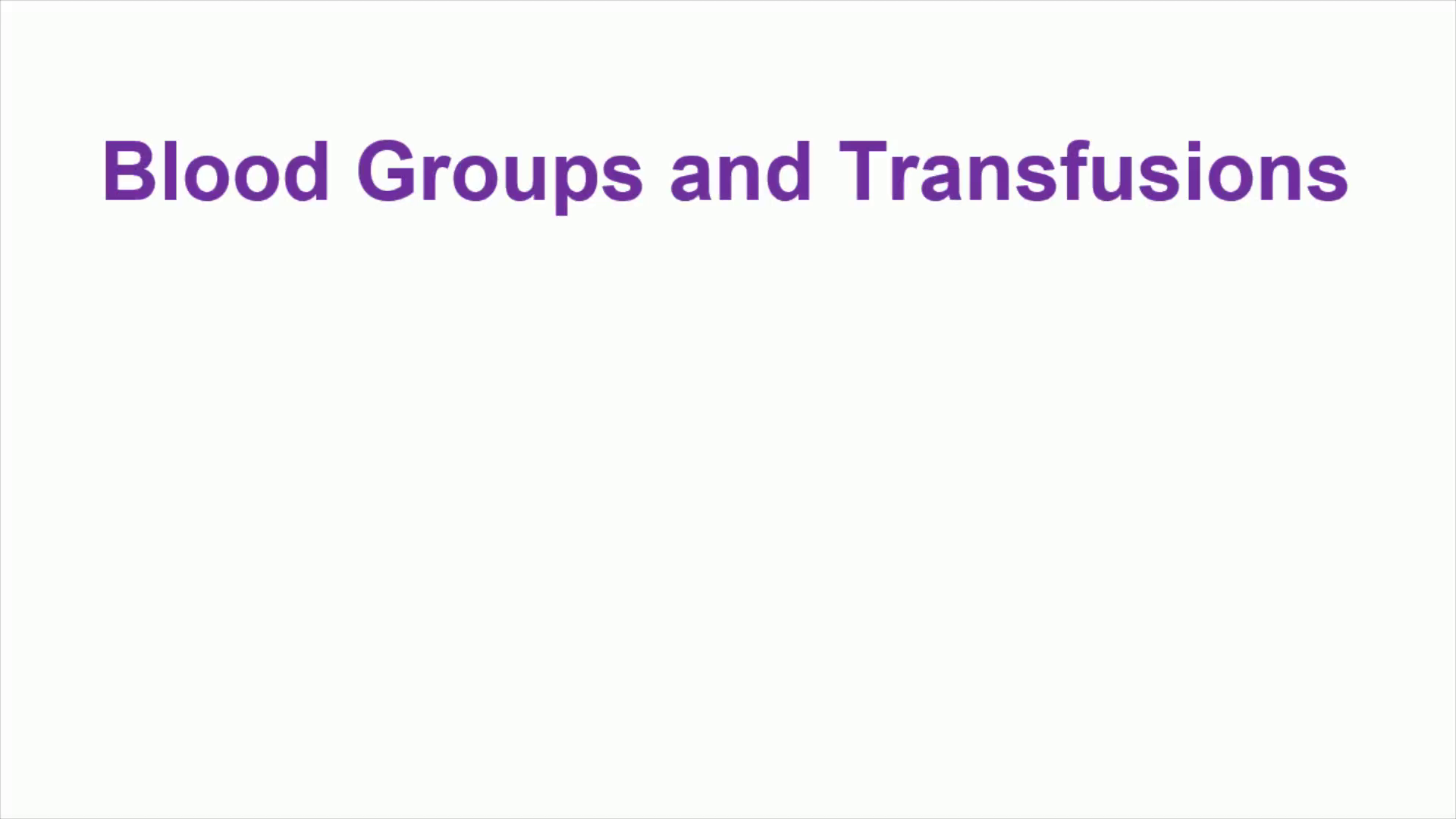
Page 1 (0s)
Blood Groups and Transfusions. Prof. N. Sudheera Kalupahana June 2021.
Page 2 (14s)
Objective: Explain the basis of blood grouping, cross-matching and incompatibility.
Page 3 (50s)
Case History. Mrs. Dissanayake , a 30-year-old lady is admitted for the delivery of her 2 nd child. Her 1 st child was delivered at home. The obstetric registrar has asked you to prepare her for an emergency Caesarian Section. You , the house officer, has to get one pint of blood ready..
Page 4 (3m 51s)
Determined by antigens on the surface of red cells (agglutinogens).
Page 5 (5m 15s)
Blood group incompatibility may cause:. Transfusion reactions.
Page 6 (6m 28s)
The A and B antigens (agglutinogens) are inherited as mendelian allelomorphs, A and B being dominants.
Page 7 (9m 27s)
ABO System. Blood group o Antigen(s) present on the red blood cells A antigen B antigen A antigen and antigen None Antibodies present in the Anti- serum Anti-B Anti-A None A and Anti-B Genotype(s) AA or AO BB or BO 00.
Page 8 (11m 13s)
ABO System. Antibodie present Antigens present Group A Anti-B A antigen Group B Anti-A B antigen Group AB None A and B antigens Group O Anti-A and Anti-B No antigens.
Page 9 (11m 51s)
ABO System.
Page 10 (12m 16s)
Grouping of Blood. Anti-B Type A Type B Type AB.
Page 11 (14m 25s)
Blood Group Antigens on cell Antibodies in plasma Transfuse with group A A Anti-B A or O B B Anti-A B or O AB A and B none AB, A, B or O O None Anti-A & B O.
Page 12 (16m 24s)
Case History contd... Mrs. Dissanayake had the Caesarian section (Fortunately!) blood transfusion was not necessary Her newborn was severely jaundiced Mother’s blood group was B negative.
Page 13 (17m 52s)
Composed primarily of the C, D, and E antigens. D is by far the most antigenic component.
Page 14 (20m 10s)
Rh negative mother carries a Rh positive fetus. Small amounts of fetal blood leaks into the maternal circulation at the time of delivery.
Page 15 (21m 22s)
If hemolysis in the fetus is severe, the infant may die in utero or may develop anemia, severe jaundice, and edema (hydrops fetalis).
Page 16 (22m 48s)
Preventing Rhesus Incompatibility. All women should have their blood group known prior to delivery If a Rh negative mother gives birth to a Rh positive baby: Anti-D is given to the mother to prevent sensitisation.
Page 17 (24m 44s)
Blood Transfusion. ihii.
Page 18 (24m 53s)
Indications for transfusion. Hypovolaemia due to loss of blood Severe anaemia.
Page 19 (26m 43s)
Serological Testing. Three tests: ABO/Rh Antibody detection/identification Crossmatch.
Page 20 (27m 20s)
Crossmatching. Purpose : Prevent transfusion reactions Double checks for ABO errors Another method of detecting antibodies.
Page 21 (27m 53s)
Crossmatch. Donor RBCs (washed). Patient serum. No agglutination ~ compatible.
Page 22 (28m 37s)
ABO incompatibility reaction – can be rapidly fatal.
Page 23 (30m 20s)
ABO and Rh systems are the two major blood groups.